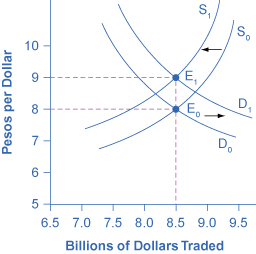The Euro Exchange Rate On Forex
Country Currency ISO Rates y-m-d Time E.U. Euro EUR 0.8575 21:31:03 U.K. British Pound GBP 0.75796 21:31:03 Philippines Philippine Peso PHP 53.4 21:31:03 Malaysia Malaysian Ringgit MYR 4.045 21:31:03 India Indian Rupee INR 68.5211 21:31:03 U. indicators for binary options trading A.E.
Best Euro Exchange Rate

The euro foreign exchange reference rates (also known as the ECB reference rates) are published by the ECB at around 16:00 CET. Reference rates for all the official currencies of non-euro area Member States of the European Union and world currencies with the most liquid active spot FX markets are set and published. View foreign exchange rates and use our currency exchange rate calculator for more than 30 foreign currencies.
This article provides an overview of the factors affecting the leading currency pair: euro-dollar exchange commonly referred to as EUR/USD. The euro-dollar exchange rate is the price at which the world demand for US dollars equals the world supply of euros. Regardless of geographical origin, a rise in the world demand for euros leads to an appreciation of the euro. Factors affecting the Euro Dollar exchange rates Four factors are identified as fundamental determinants of the real euro to dollar exchange rate: • The international real interest rate differential • Relative prices in the traded and non-traded goods sectors • The real oil price, precious metals and other commodities • The relative fiscal position The nominal bilateral dollar to euro currency exchange is the exchange rate that attracts the most attention.
Dollar To The Euro Exchange Rate
Download free forex strategy. Despite the comparative importance of euro to US dollar bilateral trade links, trade with the UK is, to some extent, more important for the Euro zone than is trade with the US. The dollar and the euro have a strong predisposition to run together in the very short term, but sometimes there can be significant discrepancies.
The Euro Exchange Rates On Forex
The very strong appreciation of the dollar against the euro in 2003 is one example of these discrepancies. In the long run, the correlations between the bilateral dollar to euro exchange rate, and different measures of the effective exchange rate of Euroland, have been rather high, especially if one looks at the effective real exchange rate. As inflation is at very similar levels in the US and the Euro area, there is no need to adjust the dollar to euro exchange rate for inflation differentials, but because the Euro zone also trades intensively with countries that have relatively high inflation rates (e.g. Some countries in Central and Eastern Europe, Turkey, etc.), it is more important to downplay nominal exchange rate measures by looking at relative price and cost developments. The fall of the dollar The steady and orderly decline of the dollar from early 2002 to early 2007 against the euro, Australian dollar, Sterling Pound, Canadian dollar and a few other currencies (i.e., its trade-weighted average, which is what counts for purposes of trade adjustment), remains significant. In the wake of the sub-prime mortgage crises in the US, dollar losses escalated and continued to feel the backlash. The Fed responded with several rounds of rate hikes while weighing the balance of domestic growth and inflation fears.